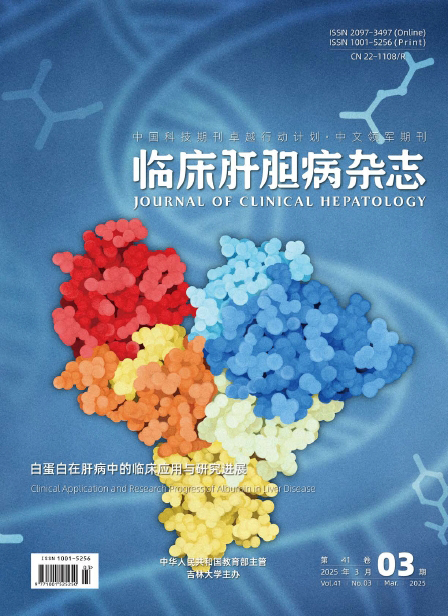| [1] |
LI TJ, YE LY, JIN KZ, et al. Advances in basic research, clinical diagnosis and treatment of pancreatic cancer in 2023[J]. China Oncol, 2024, 34( 1): 1- 12. DOI: 10.19401/j.cnki.1007-3639.2024.01.001. |
| [2] |
KHALAF N, EL-SERAG HB, ABRAMS HR, et al. Burden of pancreatic cancer: From epidemiology to practice[J]. Clin Gastroenterol Hepatol, 2021, 19( 5): 876- 884. DOI: 10.1016/j.cgh.2020.02.054. |
| [3] |
SIEGEL RL, MILLER KD, FUCHS HE, et al. Cancer statistics, 2022[J]. CA Cancer J Clin, 2022, 72( 1): 7- 33. DOI: 10.3322/caac.21708. |
| [4] |
Chinese Society for Clinical Oncologists, Expert Committee on Pancreatic Diseases, China International Exchange and Promotive Association for Medical and Health Care, Expert Committee on Abdominal Neoplasms, China Medicine Education Association. Expert consensus on the MDT model of pancreatic cancer in China(2020 version)[J]. J Clin Hepatol, 2020, 36( 9): 1947- 1951. DOI: 10.3969/j.issn.1001-5256.2020.09.007. |
| [5] |
CAO MM, CHEN WQ. Epidemiology of cancer in China and the current status of prevention and control[J]. Chin J Clin Oncol, 2019, 46( 3): 145- 149. DOI: 10.3969/j.issn.1000-8179.2019.03.246. |
| [6] |
HUA YQ, LIU LM, CHEN Z, et al. Modern interpretation of the theoretical system of Chinese medicine syndrome treatment in pancreatic cancer[J]. Chin J Integr Tradit West Med, 2019, 39( 1): 107- 110. DOI: 10.7661/j.cjim.20181031.362. |
| [7] |
WANG XH, LIU XY, FU WS. Research progress of TCM therapy for pancreatic cancer[J]. Chin J Integr Trad West Med Dig, 2022, 30( 4): 303- 307.
王馨慧, 刘小英, 付文胜. 胰腺癌的中医药治疗研究进展[J]. 中国中西医结合消化杂志, 2022, 30( 4): 303- 307.
|
| [8] |
HUANG JH, ZHONG MZ, CAO PG. Diagnosis& treatment of clinical oncology[M]. Changsha: Hunan Science& Technology Press, 2010: 325- 329.
黄俊辉, 钟美佐, 曹培国. 临床肿瘤诊断与治疗学[M]. 长沙: 湖南科学技术出版社, 2010: 325- 329.
|
| [9] |
General Office of National Health Commission. Standard for diagnosis and treatment of pancreatic cancer(2022 edition)[J]. J Clin Hepatol, 2022, 38( 5): 1006- 1015. DOI: 10.3969/j.issn.1001-5256.2022.05.007. |
| [10] |
|
| [11] |
ZHANG BL, WU MH. Internal medicine of traditional Chinese medicine[M]. Beijing: China Press of Traditional Chinese Medicine, 2017.
张伯礼, 吴勉华. 中医内科学[M]. 北京: 中国中医药出版社, 2017.
|
| [12] |
HUANG LZ. Integrated traditional Chinese and western medicine oncology[M]. Beijing: China Press of Traditional Chinese Medicine, 2020: 231- 232.
黄立中. 中西医结合肿瘤病学[M]. 北京: 中国中医药出版社, 2020: 231- 232.
|
| [13] |
LIN HS. Guidelines of diagnosis and therapy in oncology with traditional Chinese medicine[M]. Beijing: People’s Medical Publishing House, 2014: 400- 416.
林洪生. 恶性肿瘤中医诊疗指南: 2014年版[M]. 北京: 人民卫生出版社, 2014: 400- 416.
|
| [14] |
LI JB, MA L. Terminology Specification for Common Clinical Symptoms of Traditional Chinese Medicine(Revised)[M]. Beijing: China Medical Science and Technology Press, 2015.
黎敬波, 马力. 中医临床常见症状术语规范(修订)[M]. 北京: 中国医药科技出版社, 2015.
|
| [15] |
|
| [16] |
MIAO R, ZHANG Z, LI FJ, et al. ZHANG Peitong’s clinical experience on treating pancreatic cancer with“strengthening body and treating cancer”[J]. Liaoning J Tradit Chin Med, 2023, 50( 9): 36- 39. DOI: 10.13192/j.issn.1000-1719.2023.09.008. |
| [17] |
XIAO X, WANG XQ, ZUO JH, et al. JIA yingjie’s experience in treating pancreatic cancer based on the theory of“Chuzhuo Peiben”[J]. World Chin Med, 2023, 18( 19): 2811- 2814. DOI: 10.3969/j.issn.1673-7202.2023.19.018. |
| [18] |
SUNG H, FERLAY J, SIEGEL RL, et al. Global cancer statistics 2020: GLOBOCAN estimates of incidence and mortality worldwide for 36 cancers in 185 countries[J]. CA Cancer J Clin, 2021, 71( 3): 209- 249. DOI: 10.3322/caac.21660. |
| [19] |
YANG H, WANG XK, FAN JH. Present status of epidemiology, risk factors and screening of pancreatic cancer in China[J]. Cancer Res Prev Treat, 2021, 48( 10): 909- 915. DOI: 10.3971/j.issn.1000-8578.2021.21.0789. |
| [20] |
MIDHA S, CHAWLA S, GARG PK. Modifiable and non-modifiable risk factors for pancreatic cancer: A review[J]. Cancer Lett, 2016, 381( 1): 269- 277. DOI: 10.1016/j.canlet.2016.07.022. |
| [21] |
ZHAO JQ, XUE ZM, YANG JP, et al. A case-control study of the risk factors for pancreatic cancer[J]. J Mod Oncol, 2018, 26( 8): 1229- 1232. DOI: 10.3969/j.issn.1672-4992.2018.08.020. |
| [22] |
AFGHANI E, KLEIN AP. Pancreatic adenocarcinoma: Trends in epidemiology, risk factors, and outcomes[J]. Hematol Oncol Clin North Am, 2022, 36( 5): 879- 895. DOI: 10.1016/j.hoc.2022.07.002. |
| [23] |
HALBROOK CJ, LYSSIOTIS CA, PASCA DI MAGLIANO M, et al. Pancreatic cancer: Advances and challenges[J]. Cell, 2023, 186( 8): 1729- 1754. DOI: 10.1016/j.cell.2023.02.014. |
| [24] |
YAO DP, ZHANG PT. Analysis of syndrome prognosis of 106 cases of pancreatic cancer[J]. J Tradit Chin Med, 2016, 57( 23): 2017- 2020, 2024. DOI: 10.13288/j.11-2166/r.2016.23.010. |







 DownLoad:
DownLoad: